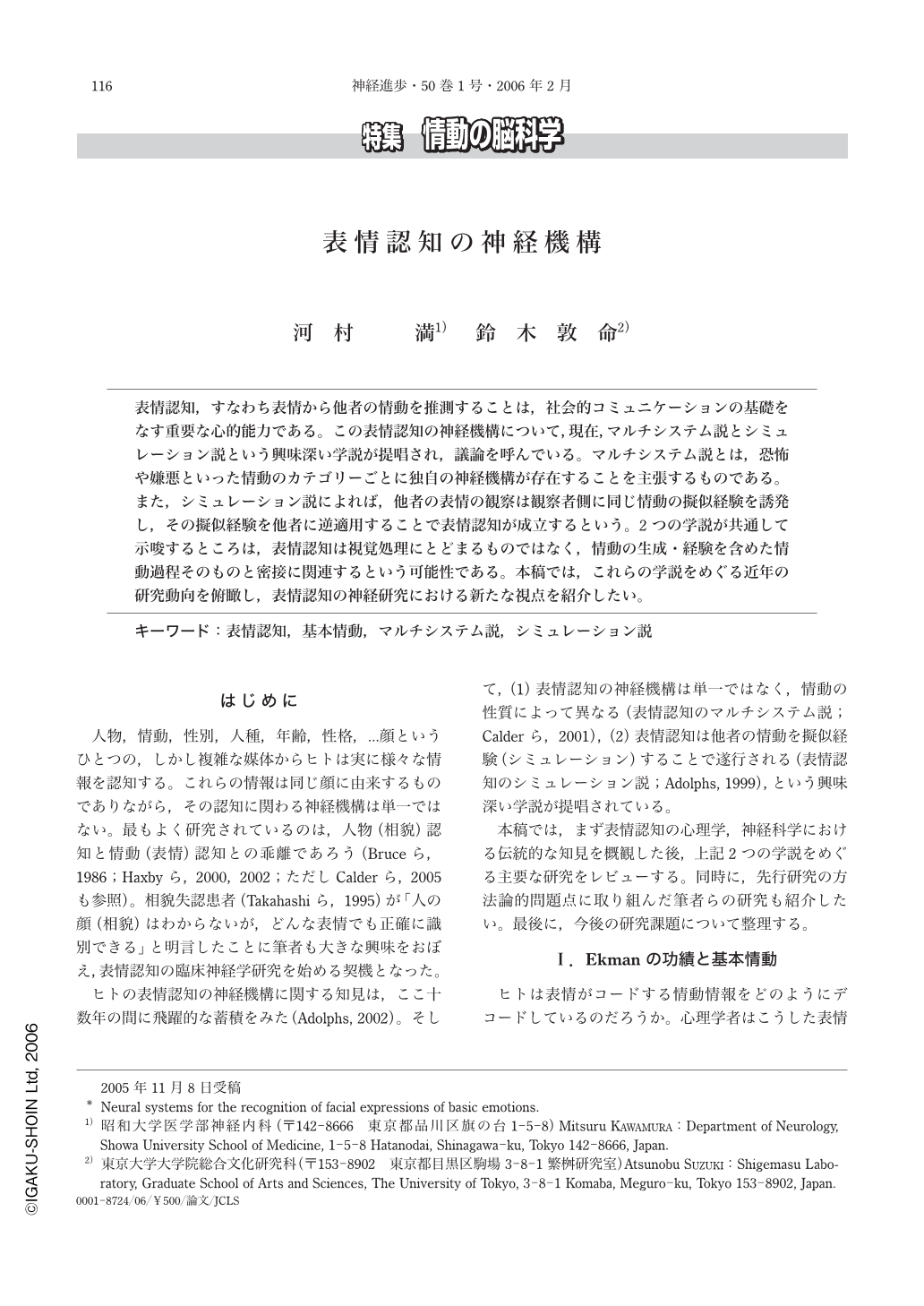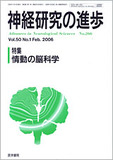Japanese
English
- 有料閲覧
- Abstract 文献概要
- 1ページ目 Look Inside
- 参考文献 Reference
表情認知,すなわち表情から他者の情動を推測することは,社会的コミュニケーションの基礎をなす重要な心的能力である。この表情認知の神経機構について,現在,マルチシステム説とシミュレーション説という興味深い学説が提唱され,議論を呼んでいる。マルチシステム説とは,恐怖や嫌悪といった情動のカテゴリーごとに独自の神経機構が存在することを主張するものである。また,シミュレーション説によれば,他者の表情の観察は観察者側に同じ情動の擬似経験を誘発し,その擬似経験を他者に逆適用することで表情認知が成立するという。2つの学説が共通して示唆するところは,表情認知は視覚処理にとどまるものではなく,情動の生成・経験を含めた情動過程そのものと密接に関連するという可能性である。本稿では,これらの学説をめぐる近年の研究動向を俯瞰し,表情認知の神経研究における新たな視点を紹介したい。
Facial expression recognition, or inference on others’emotional states from facial expressions, is one of the basic mental skills that enable successful social interaction. There emerges interesting but controversial theories on neuro-cognitive mechanisms for facial expression recognition:multi-systems theory and simulation theory. The multi-systems theory asserts that neural systems for facial expression recognition are not unitary but contain multiple, dissociable substrates that are dedicated to the recognition of specific emotions. According to the simulation theory, when observing the facial expressions of another person, the analogous emotional state is generated and experienced(i.e. simulated)in the observer himself/herself.“Reverse”attribution of his/her simulated emotion back to the expresser contributes to facial expression recognition. A common, central tenet that underlies both theories is that facial expression recognition may not end with visual analyses of complex objects(i.e. faces)but may further involve whole emotional processes including the generation and experience of emotional states. In this review article, we will introduce some new perspectives in the study of neural systems for facial expression recognition by examining the recent literature on the two debatable theories.

Copyright © 2006, Igaku-Shoin Ltd. All rights reserved.


